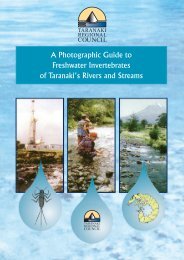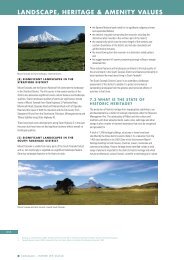safety data sheet
safety data sheet
safety data sheet
Create successful ePaper yourself
Turn your PDF publications into a flip-book with our unique Google optimized e-Paper software.
Notes For Medical<br />
Personnel<br />
Remove contact lense if present and easy to do so. Continue<br />
rinsing.<br />
Skin Remove contaminated clothing. Flush affected area with<br />
running water Launder contaminated clothing before re-use.<br />
Inhalation Remove to fresh air.<br />
Treat symptomatically. If aspirated into the lungs during<br />
ingestion,<br />
or from vomiting, chemical pneumonitis or pulmonary<br />
oedema may occur.<br />
Section 5: Fire Fighting Measures<br />
Hazards Flammable after moderate preheating and therefore will support combustion<br />
under extreme conditions of a fire.<br />
Extinguishing Foam, dry chemical powder, Carbon dioxide, water spray or fog (large fires<br />
Media<br />
only)<br />
Protective Gear Fire fighters must use recommended protective equipment and self-contained<br />
breathing apparatus. Hazchem Code 3[Y]<br />
Section 6: Accidental Release Measures<br />
Small Spills Shut off ignition sources. Absorb spill with inert material and place in container for<br />
removal by approved waste management facility.<br />
Large Spills Remove all ignition sources. Wear protective gloves and <strong>safety</strong> glasses. Increase<br />
ventilation. Contain spill with sand, earth or vermiculite. Collect recoverable product<br />
into labelled containers for removal by approved waste management facility.<br />
Section 7: Handling and Storage<br />
Handling Use good occupational work practice. Wear recommended Personal<br />
Protective Equipment (PPE) and observe precautions in section two of this<br />
<strong>safety</strong> <strong>data</strong> <strong>sheet</strong>.<br />
Storage Site Store away from heat and open flames. Store at ambient temperatures.<br />
Keep containers tightly closed and in a well ventilated place.<br />
Packaging Where possible keep in manufacturer’s original container. If container<br />
deteriorates or decanting to smaller quantities the new packaging should be<br />
sturdy polyethylene /polypropylene<br />
Section 8: Exposure Controls/Personal Protection<br />
Workplace Exposure<br />
No value assigned by NZ OSH but 2000 mg/m<br />
Standards<br />
3 TWA recommended<br />
based on generic equivalents<br />
Engineering Controls In general, dilution ventilation is a satisfactory health hazard control<br />
for this substance.<br />
Personal Protective<br />
No special equipment needed when handling small quantities. In an<br />
Equipment<br />
industrial environment with large quantities involved, <strong>safety</strong> glasses,<br />
PVC gloves and <strong>safety</strong> footwear are recommended.<br />
Section 9: Physical and Chemical Properties<br />
Appearance: Clear to slightly hazy, amber liquid with characteristic<br />
hydrocarbon odour.<br />
Boiling Point (°C): 296<br />
Vapour Pressure (kPa @ 20°C) 200<br />
Water Solubility Miscible<br />
Plus other properties if applicable<br />
National Marine Oil Spill Contingency Plan Page 43 of 45<br />
Chapter 7 – Dispersants Use Issue 7 June 2012














